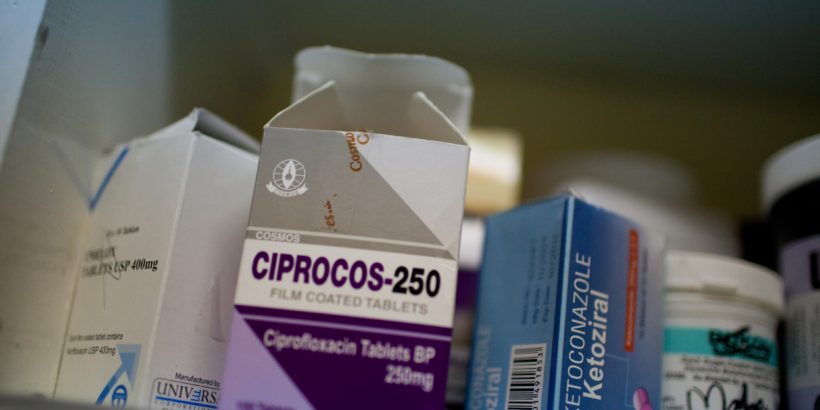One-third of the world’s population is at risk of contracting typhoid. Historically, medical providers have been able to treat most typhoid infections with antibiotics, but increasing rates of drug-resistant typhoid are threatening to push the disease beyond the reach of available medicine, jeopardizing the lives of millions of people who live in typhoid-endemic regions. World Antibiotic Awareness Week, recognized November 13-19, is an opportunity to take a look at the history of drug resistance, and how slowing the development and spread of drug-resistant typhoid can save lives.
Drug resistance develops when bacteria mutate and are no longer affected by treatment. Resistance occurs naturally, but the process is accelerated by contact with antibiotics – the more bacteria are exposed to an antibiotic, the more opportunity there is for mutations to occur and resistance to develop. In any disease, this can lead to prolonged illness and increased healthcare costs, as medical providers are forced to run additional tests and rely on more expensive treatments. When antibiotic resistant strains emerge and spread, once-common antibiotics stop working and what should be an insignificant infection can be deadly.
Drug resistance is not unique to Salmonellae, the bacteria family that causes typhoid, but the use and misuse of antibiotics to treat typhoid infections has helped earn the bacteria a spot on the World Health Organization’s “priority pathogen” list, which features the greatest bacterial threats to human health.
The use and misuse of antibiotics is rampant in part because many health providers in typhoid-endemic communities do not have the ability to conduct a costly and lab-intensive blood test to diagnose typhoid. Even where laboratories are available, blood culture tests have limited accuracy, correctly identifying typhoid cases only 40 to 60 percent of the time. As a result, health providers are often forced to diagnose based on symptoms alone. If a patient from a typhoid-endemic region experiences high fever, abdominal pain, constipation or diarrhea, a health provider may give them antibiotics to treat typhoid when the patient might be ill with a different disease that has similar symptoms, such as malaria.
Typhoid has become increasingly resistant to many of the most common antibiotic treatments, with some strains developing resistance to several antibiotics, leaving patients with fewer accessible and affordable treatment options. A study in Malawi found that between 2011 and 2014, antibiotic-resistant typhoid cases increased from less than 7 percent to 97 percent. Nearly half of those cases were caused by H58, the most common strain of multidrug-resistant typhoid, which emerged in South Asia decades ago but has since spread, becoming prevalent throughout the region as well as throughout parts of sub-Saharan Africa.
Researchers were able to track the rapid spread of drug-resistant typhoid in Malawi, and have identified cases in several other countries in sub-Saharan Africa and Asia over recent years, because of surveillance networks. But not all countries and communities have sufficient surveillance capabilities to detect the emergence of resistant strains. Studies like the Severe Typhoid in Africa Program led by the International Vaccine Institute and the Surveillance of Enteric Fever in Africa Project led by the Sabin Vaccine Institute are working to close the gaps in surveillance by collecting disease burden data in typhoid-endemic regions. The studies’ findings will inform efforts and policies to slow the development of drug resistance, including the introduction of vaccines and improvements in safe water, sanitation and hygiene.
Typhoid data from these surveillance networks helped push prevention efforts forward last month, when the WHO’s Strategic Advisory Group of Experts (SAGE) on Immunization recommended that typhoid-endemic countries introduce typhoid conjugate vaccines (TCVs). TCVs offer important advantages over prior vaccines, such as longer duration of protection, the ability to protect younger children, and the potential for delivery with other vaccines. Expanded coverage of TCVs through routine immunization would reduce disease and the need for antibiotics – two key factors in the effort to stem the development and spread of drug-resistant typhoid.
But TCVs are only one piece of the puzzle. This World Antibiotic Awareness Week, let’s remember that an integrated prevention and treatment approach including vaccines; improvements in safe water, sanitation, and hygiene; availability of dependable typhoid diagnostics; and wiser use of antibiotics are all part of the solution.
Photo Credit: PATH/Eric Becker



